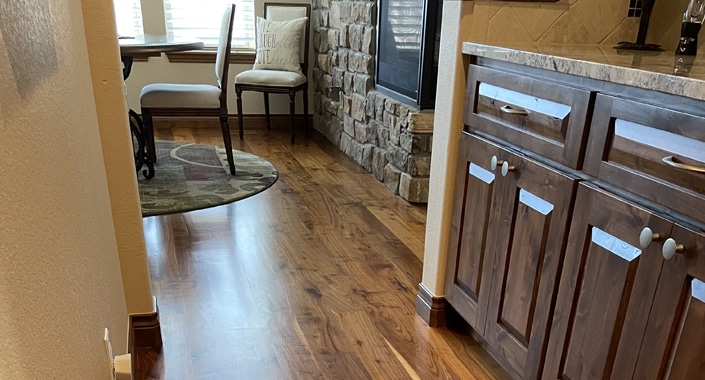
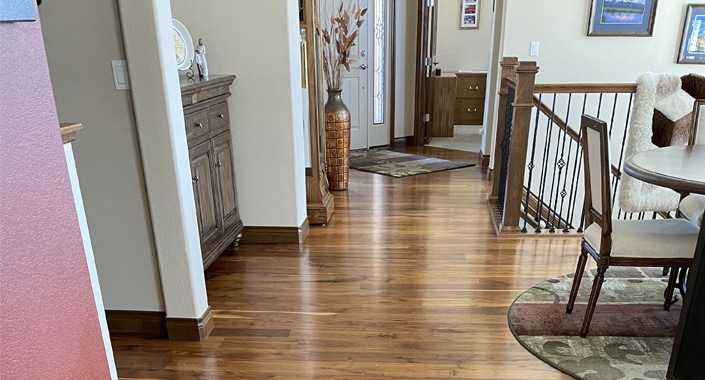
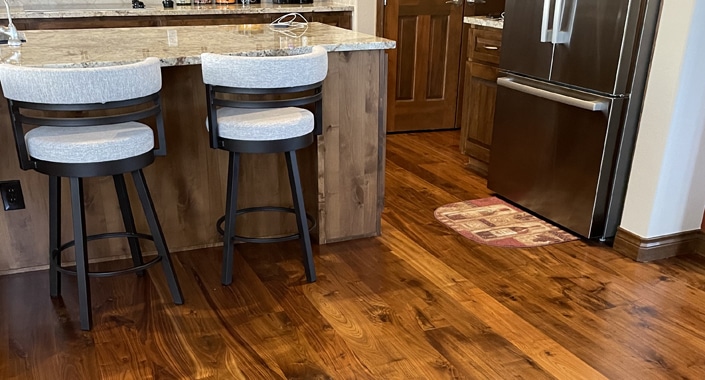
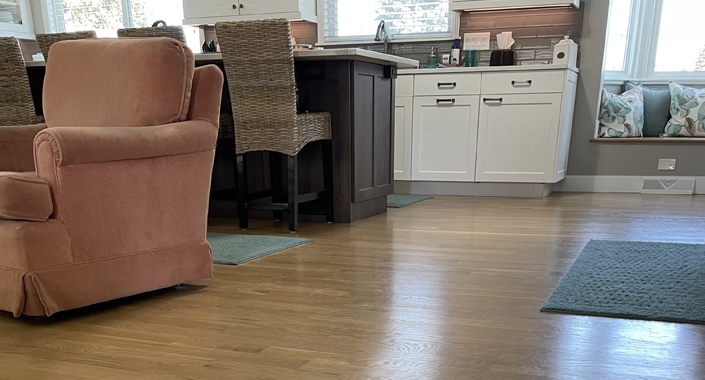
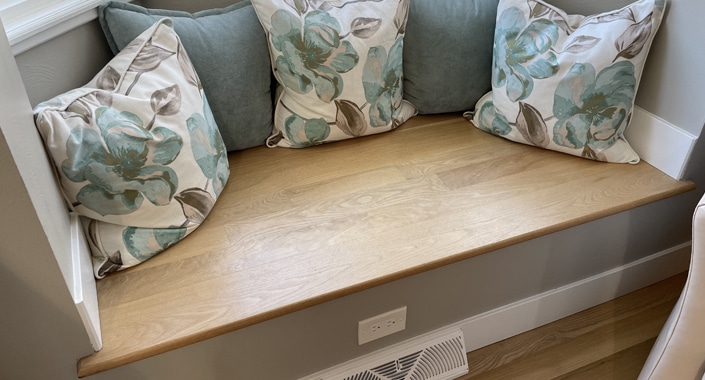
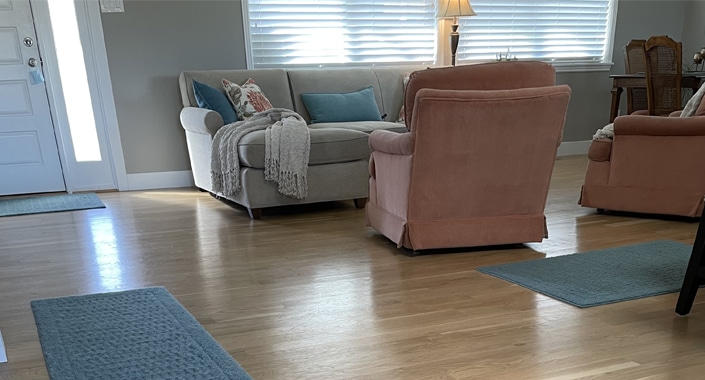
In many situations, hardwood flooring installation is one of the best ways to transform your home, but it’s important to learn as much as you can about it before getting started.
Hardwood floors offer a lot of functional benefits to your home, including being a healthier option than other materials. Unlike plastic-based materials, hardwoods can be natural. That means they are less likely to have toxins that could impact their overall health. In fact, all of our showroom products are Green Label Certified.
Not all hardwood floors are eco-friendly, but you can choose those that are. They are nearly always a better choice than plastic based laminates. That’s because, as a natural material, they break down once removed.
Hardwood floors offer a wide range of styles. You should not feel as though you are limited in the way they look, from sleek black hardwoods that offer a modern, edgy feel to hardwoods that are maple, hickory or oak, offering a more rustic feel. There are plenty of grain patterns and cutting options to add beautiful variety to your home as well.
Engineered hardwood and solid hardwood look similar, but both have very specific differences you should consider.
Solid hardwood is the ideal, even gold standard, when it comes to floor quality. It is made from hardwood – which means it is a solid, single piece of wood.
Engineered hardwood is made up of layers of that natural wood. It is still natural wood but constructed of five to seven layers of plywood that have been pressed together often in a crisscross pattern.
Both engineered hardwood and solid hardwood can be installed in several ways, depending on the preparation provided by the manufacturer and your needs. Many forms are nailed down, which is the most common option for solid hardwood. When the plank is 5” wide or more, we will use the glue assist installation method which includes gluing and stapling the plank to the floor ensuring that everything stays in place.
Engineered hardwood floors can sometimes be nailed into place, but other forms have a click-lock style, which means they are not bolted to the ground. They are considered floating floors. Other forms can be glued in place.
Solid hardwood floors are some of the most desirable because of their stunning beauty and overall durability. Here’s what you need to know about them.
Solid hardwoods are milled from just one piece of timber or a log. The wood species can range somewhat, with oak being one of the most common. Once the raw logs are harvested, the lumber goes through the following process.
The wood is cut into long pieces. Then the wood is allowed to air dry for some time. This allows for some of the natural moisture in the wood to be removed. It aids in helping to make it a bit more stable.
After it dries some, the lumber mill will then break down the larger pieces into even pieces of wood, a process called planing. This ensures that each piece is about the same size and structure to create a standard look.
Profiling is the process of executing a bit more refined detail work with the pieces. This allows for the joints and connections to be created. Profiling can also help to soften the sharp edges.
As a natural material, wood will break down over time. Sealing helps to prevent that from occurring.
There are a few specific things to do to keep your solid hardwood floors looking their best:
Walk-Off mats and area rugs are welcome
Use rugs on as much of the surface as you can, or at least in areas of high traffic. This helps to protect the surface of the wood.
The best cleaner for hardwood is mild dish soap and warm water. However, you don’t want to use too much water as that can leach into the wood. If you plan to use any pre-made hardwood cleaner, keep it as mild as possible.
You don’t need to wax hardwood floors, and in most cases, you should not do so. This may add a shine to them, but it does not provide the right protection for the wood.
Keep items off the floor. If the floors get muddy, be sure to clean them up. Grit from dirt and dust can scratch the surface.
When you have a bigger mess to clean, it is helpful to use a cleaner. However, choose mild cleaners and use as small of an amount as possible. That ensures they can be removed properly and may help you to avoid any damage to the surface.
The key is to avoid any contact with water possible and, when it does get wet, such as from a spill, clean that up as quickly as possible.
The natural element of hardwood floors means that they can absorb a significant amount of moisture. Since Colorado has such a dry climate it is a good idea to install a humidifier as low humidity can make hardwoods more brittle. Humidifiers can help you to control the home’s humidity levels. By having a humidifier, your hardwoods will not have expansion or contraction issues. The typical range for solid wood is mid-30 % humidity, and for engineered wood, it’s mid to high 20%.
Engineered hardwood floors are a very reliable, high-quality flooring product. They are made of 100% hardwoods but constructed in a way that reduces some of their cost.
Engineered wood uses two, three, or five sheets, or piles, of wood that are laminated together. This process creates interlocking and highly durable planks that are made up of layers of wood instead of a single level.
Remember that these floors are natural surfaces, and as such, they need to be cared for properly to help maintain them long term. Here are some steps to doing so.
Keep the floors as clean as possible. Any type of loose material can penetrate the surface and cause damage over time.
Use as little cleaner as possible to keep the floors clean. Water is the first and primary cleaning tool. If you need to use a hardwood cleaner, use the least amount possible.
As natural surfaces, they will allow moisture to penetrate into them. That’s why, if there’s a spill, you need to clean it up quickly. They can also stain from some materials.
Wax does not protect the surface and can make the floors harder to manage overall. They can also become so slick that they increase the risk of falls.
This is especially beneficial in areas where the floors are used significantly, like by doorways or under the kitchen table.
Protect the floors by reducing the amount of scuff marks. Wearing high-heeled shoes can cause more significant damage and scratches to the wood.
You can use hardwood floors in most areas of the home. Get creative to use them properly in these areas.
Hardwoods in the living room can be an excellent choice. They are beautiful and can be long lasting, especially if you put an area rug over the area where couches or tables will sit.
Bedrooms can be a bit more rustic and cozy with the addition of hardwoods. Add a rug under the bed to help reduce some of the pressure on the legs from embedding into the wood floors.
You can use hardwood in the kitchen, but the increased risk of moisture means you’ll want to look for a product that’s more waterproof when possible. And keep the surface as dry as possible.
Using hardwoods in the bathroom could be an option as long as you minimize water splashes on them. Remember, hardwood can get wet, but you don’t want the floors to stay wet too long.
Hardwoods work well on stairs, especially with a runner along the middle where people will walk.
The overall cost of installing hardwood floors will range based on many factors. Here are some things to expect.
If you plan to install new hardwood floors in your home, that means you’ll be removing whatever is present and adding new floors. Assuming no subfloor work is going to be done, you can expect the following:
Another option is to refinish the current hardwood you have. You can expect this to range widely on the project. However, to sand, stain, and finish, it is about $4 per foot.
Price range for engineered wood per foot
$6.50 – $10.50
Price range for solid wood per foot (just raw material, once installed needs to be sanded and stained which is not included in the price)
$3.50 – $10
Price range for sand, stain, and finish only per foot $4